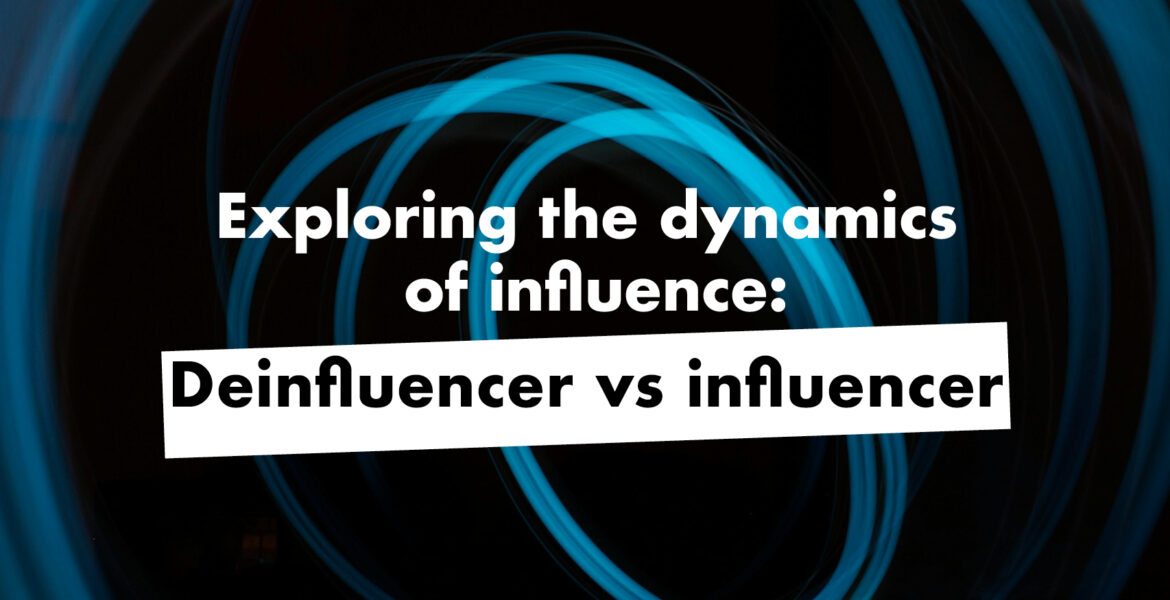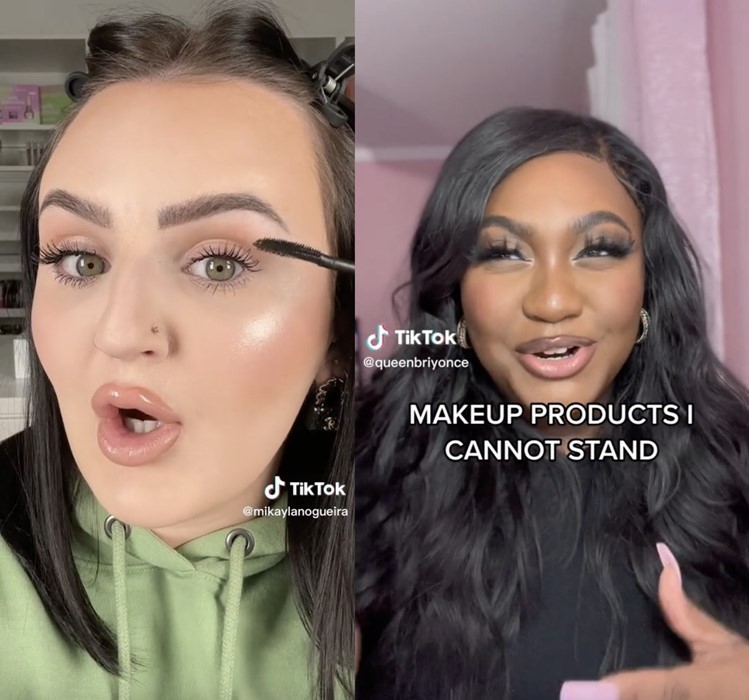
The delicate balance of digital influence
In the vast realm of social media and online content creation, the influence held by creators has become a powerful force shaping consumer behaviours and preferences. At the forefront are influencers, individuals who seamlessly blend promotional content with personal branding to captivate and sway the decisions of millions. Yet, as the influence market continues to thrive, a counter-movement has emerged – the world of deinfluencers.
Deinfluencing is not a total rejection of the influencer landscape; rather, it stands as a testament to the evolving expectations of digital audiences. While influencers thrive on endorsing products as essential items for everyone, deinfluencers champion a different approach. They prioritise authenticity, honesty, and the well-being of their followers, questioning the hype surrounding products and steering their audiences towards informed decisions.
We delve into the dynamics between influencers and deinfluencers. As creators compete for the attention and trust of their followers, the tug-of-war between pushing trends and fostering genuine connections unfolds.

The influencer perspective
Influencer analytics has become a vital tool for organisations looking to manage the complicated world of influencer
In the busy marketplace of digital influence, influencers stand as charismatic architects, shaping trends and consumer preferences with each post, video, or endorsement. These popular online trendsetters have a lot of influence, using their big followings to recommend things. Influencers mostly want to convince their followers to buy stuff, usually by saying the products are good for everyone.
People like influencers because they share stuff that feels real, and they’re good at mixing in ads without it feeling out of place.Whether it’s a beauty product, fashion item, or lifestyle accessory, influencers are adept at framing these commodities as essential to a broad audience.
The influencer culture often operates on a sense of urgency, convincing followers that certain products are not just desirable but necessary for a fulfilled life. This urgency creates a ripple effect, driving consumers to quickly adopt trends, sometimes without thoroughly considering the practicality or necessity of the endorsed items.
To illustrate the impact of influencers on a global scale, we need only glance at the colossal followings commanded by figures like Salt Bae, Huda Kattan, Charli D’Amelio, Khaby Lame, and Lele Pons. Their ability to influence purchasing decisions and lifestyle choices is a testament to the pervasive nature of the influencer market and its impact on consumer behaviour.

Instagram: crafting authentic connections in the world of curated aesthetics
Curated aesthetics: Influencers on Instagram often curate aesthetically pleasing feeds, contributing to the perception of a glamorous and idealised lifestyle.
Long-Form content: Instagram’s IGTV and Stories allow influencers and deinfluencers to share more in-depth and personal content, creating opportunities for honest discussions.
Shopping features: Instagram’s shopping features make it a prime platform for influencers to promote products, while deinfluencers may use these features to showcase alternative and budget-friendly options.
Influencer marketing evolution: Both influencers and deinfluencers adapt their strategies as Instagram evolves its algorithm and introduces new features, influencing the dynamics of digital influence.Audience interaction: Instagram’s emphasis on comments and direct messages fosters direct interaction between creators and followers, providing a platform for deinfluencers to address questions and concerns more intimately.
Deinfluencing unveiled
In a world where influencers rule, there’s a new group called deinfluencers. They’re not exactly against influencers, but they’re all about being real and honest. Deinfluencers want to change how people think about product endorsements, asking if all the hype is really worth it.
Unlike influencers, deinfluencers do not view their role as a channel for sales. Instead, they see themselves as guides, offering followers sincere insights and opinions on products. The essence of deinfluencing lies in encouraging scepticism and critical thinking among the audience, prompting them to evaluate the utility and suitability of a product for themselves.
Deinfluencers often delve deeper into the narrative surrounding products, exploring their nuances and potential drawbacks. By doing so, they present a more comprehensive view of a product, acknowledging that not every endorsed item is a one-size-fits-all solution. Deinfluencers understand the diverse needs of their audience and strive to present alternatives, sometimes even suggesting less expensive options that align with their followers’ budgets.

TikTok: navigating deinfluencing in a swift and trend-driven terrain
Short-form authenticity: TikTok’s format encourages quick, authentic, and unfiltered content, aligning with the deinfluencer ethos of transparency.
Rapid trend cycles: The platform’s algorithm-driven trends change swiftly, emphasising the need for deinfluencers to provide timely, honest insights amid the fast-paced environment.
Diverse content creators: TikTok hosts a diverse range of content creators, allowing deinfluencers to connect with niche audiences and cater to specific interests more effectively.
Engagement metrics: The platform’s emphasis on engagement metrics, such as likes and comments, influences both influencers and deinfluencers in shaping their content to resonate with their audience.Challenges utilising TikTok: TikTok’s popularity challenges deinfluencers to navigate a space where trends can become viral quickly, requiring them to be vigilant in questioning and presenting alternative perspectives.

Honest opinions vs universal appeal
The spilt between influencers and deinfluencers becomes most apparent when examining their contrasting messaging strategies. Influencers often present products as universally beneficial, glossing over potential drawbacks or limitations. This approach creates an illusion of one-size-fits-all solutions, fostering a sense of urgency among followers to acquire the latest endorsed items.
On the other hand, deinfluencers prioritise honest opinions and recognise that not every product is suitable for everyone. Rather than endorsing a one-size-fits-all mentality, deinfluencers delve into the specific attributes and drawbacks of products, acknowledging their nuances. By doing so, they encourage followers to approach purchasing decisions with a more discerning eye, understanding that a product’s utility depends on individual needs and preferences.
Deinfluencers go beyond the glossy facade of universal appeal, emphasising the importance of authenticity in product reviews. They provide followers with a more realistic understanding of the pros and cons, helping them make informed choices. Additionally, deinfluencers often present alternative options, recognising that budget constraints and diverse needs require a more tailored approach to product recommendations.
In essence, while influencers aim for widespread appeal, deinfluencers prioritise the depth and authenticity of their endorsements. This section explores how the two approaches shape the way followers perceive and interact with products, urging a shift from a homogeneous mindset to one that appreciates the diversity of consumer needs and preferences.
Building relationships with followers
Beyond the realm of product endorsements and trend promotion, both influencers and deinfluencers share a common goal – building meaningful connections with their followers. In the digital landscape, where trends come and go at a rapid pace, fostering a sense of community becomes crucial for sustained influence.
Influencers leverage their charisma, relatable content, and carefully curated personas to establish connections with vast audiences. The appeal of influencers lies not only in the products they endorse but in the lifestyle and values they embody. By presenting a carefully crafted image, influencers aim to create a sense of identification and admiration among their followers.
Similarly, deinfluencers recognise the importance of authentic connections. However, their emphasis on transparency and honesty goes beyond the glossy surface. Deinfluencers build relationships by positioning themselves as trusted guides rather than salespersons. They acknowledge the challenges of navigating a market saturated with trends and provide followers with the tools to make informed decisions.
The challenge for both influencers and deinfluencers lies in the ever-changing nature of the internet and the continuous evolution of trends. Followers look to these creators not only for the latest product recommendations but also for guidance in navigating the digital landscape.
As the digital realm pushes trends consistently, the financial burden on consumers to keep up becomes evident. Both influencers and deinfluencers need to balance their roles as trendsetters with a responsibility to their followers.
Setting clear objectives and KPIs
A clear knowledge of objectives and key performance indicators (KPIs) is the cornerstone of any effective influencer marketing programme. Before establishing relationships with influencers, brands should:
- Establish objectives that are clear, measurable, and doable. These can include raising brand recognition, boosting revenue, or increasing website traffic
- Find pertinent KPIs that are in line with their goals. For instance, KPIs might include click-through rates from influencer-generated material if the objective is to enhance website traffic
Influencer analytics may be carefully designed to track progress and gauge success by establishing these benchmarks up front.

Navigating authenticity in the influencer universe
Influencers, with their vast reach and charismatic allure, have cultivated a culture of rapid trend adoption, encouraging followers to embrace the latest products as must-haves for all. On the other side of the spectrum, deinfluencers, in their commitment to transparency, question the narrative, introducing scepticism and alternative perspectives.
In this contrast, one thing stands out: the need to connect with followers in a meaningful way. Influencers and deinfluencers both understand this, seeing the online world not just as a place to sell stuff but as a place to make real connections.
As followers move through this always-changing world, it’s even more important to be careful and think things through. The internet, with its whirlwind of trends, can be overwhelming and financially burdensome for consumers trying to keep up. In the world of influence, authenticity remains a important, urging both creators and followers to prioritise genuine connections over trends.
The interaction between influencers and deinfluencers shows how digital audiences’ expectations are changing. It makes us think about what influence really means – not just selling, but having real conversations and making genuine connections.

